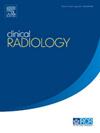Initial experience with adrenal vein sampling using 3D cursor and preprocedural computed tomography (CT) scout image
IF 2.1
3区 医学
Q2 RADIOLOGY, NUCLEAR MEDICINE & MEDICAL IMAGING
引用次数: 0
Abstract
AIM
To evaluate the success rate and learning curve of adrenal vein sampling (AVS) performed by a single interventional radiologist, using CT scout image marked with a 3D cursor.
MATERIALS AND METHODS
The AVS procedure was conducted on 135 consecutive patients between January 2020 and December 2022 by a single interventional radiologist with no prior experience with AVS. Using a 3D cursor, the positions of the right adrenal vein (RAV), left adrenal vein (LAV), and left renal vein were marked on the CT scout image. AVS procedures were performed based on the marked scout image.
RESULTS
Of 135 AVS procedures, 123 (91.1%) were successful with success rates of 82.1% (23/28), 90.4% (47/52), and 96.4% (53/55) in the first, second, and third years, respectively. Among the 12 failures, 10 occurred on the right side and 2 on the left side. The reasons for failure were failure to locate the RAV (n=5), misidentification of a vessel as the adrenal vein (right, n=4; left, n=1), RAV sample haemolysis (n=1), and the absence of adrenocorticotrophic hormone (ACTH) stimulation (LAV, n=1). Three of the failed cases (misidentified RAV, n=1; sample haemolysis, n=1; and no ACTH stimulation, n=1) underwent repeat AVS, and all were successful.
CONCLUSION
AVS can be successfully performed by an operator without prior AVS experience using a 3D cursor and CT scout imaging. The success rate of AVS increases with the operator experience.
使用3D光标和术前计算机断层扫描(CT)侦察图像进行肾上腺静脉采样的初步经验
目的利用三维光标标记的CT侦察图像,评价单个介入放射科医师进行肾上腺静脉采样(AVS)的成功率和学习曲线。材料和方法在2020年1月至2022年12月期间,由一名没有AVS经验的介入放射科医生对135名连续患者进行了AVS手术。利用三维光标在CT扫描图像上标记右肾上腺静脉(RAV)、左肾上腺静脉(LAV)和左肾静脉的位置。根据标记的侦察图像进行AVS程序。结果135例AVS手术中,成功123例(91.1%),第一年、第二年和第三年的成功率分别为82.1%(23/28)、90.4%(47/52)和96.4%(53/55)。12次故障中,右侧故障10次,左侧故障2次。失败的原因是未能定位RAV (n=5),误认血管为肾上腺静脉(右,n=4;左,n=1), RAV样本溶血(n=1),和缺乏促肾上腺皮质激素(ACTH)刺激(LAV, n=1)。失败病例3例(误诊RAV, n=1;溶血样本,n=1;无ACTH刺激者,n=1)行重复AVS,均成功。结论没有AVS经验的操作人员可以使用3D光标和CT侦察成像成功完成AVS。AVS的成功率随着操作者经验的增加而增加。
本文章由计算机程序翻译,如有差异,请以英文原文为准。
求助全文
约1分钟内获得全文
求助全文
来源期刊

Clinical radiology
医学-核医学
CiteScore
4.70
自引率
3.80%
发文量
528
审稿时长
76 days
期刊介绍:
Clinical Radiology is published by Elsevier on behalf of The Royal College of Radiologists. Clinical Radiology is an International Journal bringing you original research, editorials and review articles on all aspects of diagnostic imaging, including:
• Computed tomography
• Magnetic resonance imaging
• Ultrasonography
• Digital radiology
• Interventional radiology
• Radiography
• Nuclear medicine
Papers on radiological protection, quality assurance, audit in radiology and matters relating to radiological training and education are also included. In addition, each issue contains correspondence, book reviews and notices of forthcoming events.
 求助内容:
求助内容: 应助结果提醒方式:
应助结果提醒方式:


